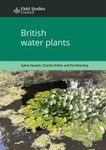![Aquaculture and the Environment Aquaculture and the Environment]()
Click to have a closer look
About this book
Contents
Customer reviews
Biography
Related titles
About this book
The continuing rapid increases in aquaculture production world-wide raises fears of further environmental degradation of the aquatic environment. The 2nd edition of this well-received book brings together and discusses the available information on the environmental aspects of various aquaculture systems, providing a valuable aid to the preparation of environmental impact assessments of aquaculture projects and shows how potential environmental problems can be reduced or mitigated by sound management.
Contents
Preface Acknowledgements 1. Introduction 2. Water Quality 2.1 Aquaculture Farms 2.2 Open Waters for Stock Building and Stock Enhancement 3. Nature of Environmental Impacts 3.1 Conflicts with Other Uses 3.2 Sedimentation and Obstruction of Water Flows 3.3 Effluent Discharges 3.4 Hypernutrification and Eutrophication 3.5 Chemical Residues 3.6 Other Effects 4. Extent of Environmental Impacts 4.1 Quantification of Effluent Discharges 4.2 Assessment of Pollutive Effects 5. Siting and Design of farms 5.1 Restrictions on the Use of Potential Sites 5.2 Basic Data for Site Selection 5.3 Siting Farms on Marshes and Mangroves 5.4 Selection of Water Bodies and Stocks to be Enhanced 5.5 Farm Design 6. Use of Natural Resources 6.1 Sources and Utilization of Land Water Resources 6.2 Use of Animal Wastes 6.3 Use of Sewage 6.4 Use of Heated-water Effluents 6.5 Recycling of Water 6.6 Use of Trophic Levels in Aquaculture 7. Waste Production in Aquaculture 7.1 Feed-derived and Metabolic Waste Products 7.2 Wastes from Food and Feedstuffs 7.3 Feed Loss 7.4 Methods of Measuring Waste Production 7.5 Fertilizer-derived wastes 7.6 Residues of Biocides and Biostats 7.7 Algal Blooms 7.8 Bacterial Communities 8. Pattern and Effect of Waste Discharges 8.1 The Nature of Waste Discharges 8.2 Polyculture 9. Introduction of Exotics and Escape of Farmed Species 9.1 Species Diversity 9.2 Ecological Effects of Introductions 9.3 Transmission of Diseases 9.4 Control of Introductions 9.5 Genetic Dilution due to Escape of Farmed Animals 9.6 Guidelines for Management of Movement of Live Aquatic Animals 10. Pathogens in the Aquatic Environment 10.1 Occurrence of Pathogens 10.2 Environmental Causes of Disease 10.3 Controlling the Spread of Communicable Diseases 11. Birds and Mammals in Aquaculture 11.1 Breeding Programmes and Genetically Modified Food Products 11.2 Effect of Aquaculture on Birds 11.3 Effect of Aquaculture on Predatory Mammals 12. Safety of Aquaculture Products 12.1 Breeding Programmes and Genetically Modified Food Products 12.2 Environmental Contaminants 12.3 Contamination by Trace Metals 12.4 Contamination by Organochlorines 12.5 Microbial Contamination of Shellfish 12.6 Contamination of Fish in Waste-water Ponds 12.7 Contamination by Algal Toxins 13. Sustainability of Aquaculture 13.1 Definition of Sustainability 13.2 Economic Sustainability 13.3 Environmental Sustainability 13.4 Social Aspects of Sustainability 13.5 Guidelines for Sustainable Aquaculture 14. Economics and Environmental Impact Assessments 14.1 Development Planning and Public Information 14.2 Aquaculture Development Zones 14.3 Environmental Impact Assessment 15. Mitigation of Adverse Effects 15.1 Land and Water Use 15.2 Culture Practices 15.3 Waste Treatment 16. Research and Regulation 16.1 Modelling the Environment 16.2 Regulatory Measures References and Further Reading Index
Customer Reviews
Biography
Dr T. V. R. Pillay was formerly Programme Director, Aquaculture Development and Coordination Programme, Food and Agriculture Organization of the United Nations.
By: TVR Pillay
196 pages, 20 b/w photos,figs,tabs
this second edition of this benchmark book reflects the enormous developments that have occured in aquaculture in the intervening decade or so... this timely book addresses those problems and offers a number of practical solutions to them. It is practical, well researched and well presented Work Boat World, December 2007 The new edition of Aquaculture: Principles and Practices is a useful addition to the literature, and is suitable as a textbook for college and university courses Aquaculture Int (2007) 15:505--506























